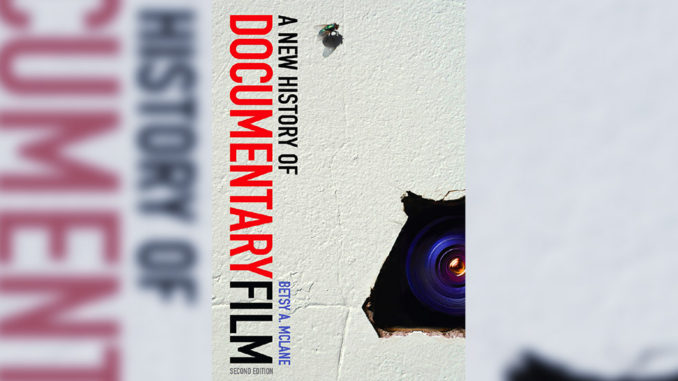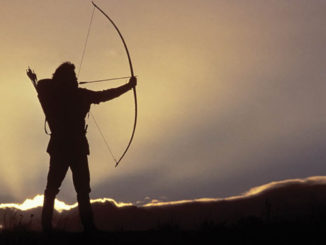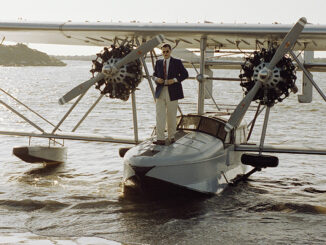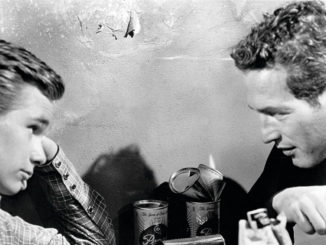
by Edward Landler
A New History of Documentary Film
Second Edition
by Betsy A. McLane
Continuum
Paperbound, 448 pages, $34.95
ISBN: 978-1-4411-2457-9
Although it has been only seven years since the first edition of A New History of Documentary Film, co-authored by the late Northwestern University film professor Jack C. Ellis and Betsy A. McLane, its newly published second edition firmly establishes itself as the most thorough overview of the evolution, achievement and future of the documentary film to date.
Carefully streamlining and judiciously rearranging the first edition, McLane — sole author of the second edition — provides a stronger context for its expanded and deeper exploration of recent documentary and the key issues affecting its current production and distribution. This enhances the dramatic shape the original gave the story of the documentary’s development and gives the new edition greater immediate relevance.
McLane’s long-term involvement in the documentary world makes this no surprise. A cinema scholar and a past president of the University Film and Video Association, she was executive director of the International Documentary Association during its decade of growth as the leading non-profit organization for the promotion of documentarians and nonfiction film. More recently, she has served as project director for the State Department’s American Documentary Showcase. She is also a frequent contributor to CineMontage.
Written in clear and direct prose, this New History of Documentary Film fulfills its foremost expressed purpose as “a historically organized chronicle of major works and trends that shaped the field.” From the earliest glimmers of nonfiction approaches to visual material in the Lumière brothers’ “actualities” and other early filmmakers’ primitive newsreel presentations and re-enactments of historic events, the book traces the full emergence of the form.
Robert Flaherty’s landmark exploration of traditional Inuit culture, Nanook of the North (1922), showed the influence of the flowering of social anthropology. Impelled by the needs of the state and a political ideology, Soviet documentarians refined the idea of propaganda. Spurred by the European artistic avant-garde, films like Walther Ruttmann’s Berlin: Symphony of a Great City (1927) and Joris Ivens’ Rain (1929) introduced psychology and aesthetic experimentation to the possibilities of approach available to nonfiction films. By the end of the 1920s, the word ‘documentary’ was being applied to such work — first by British documentary pioneer John Grierson in describing Flaherty’s Moana (1926).
Through its focus on specific films, this volume should lead its readers to a wealth of valuable documentary viewing.
“The documentary impulse has always been inseparable from its social, political, artistic and intellectual environment,” McLane states and, in mapping documentary history, the book offers a valuable reflection of the history that has created our present. The social and economic upheavals of the 1930s, as well as the rising conflict between authoritarian and democratic solutions, influenced the beginnings of nonfiction-producing systems in Britain, Canada and the United States — all of which came into full activity during and just after World War II.
The author is especially good at sorting out the complexity of documentary development from the Cold War into the present. Maintaining the timeline, she clearly traces the changes in subjects and thematic concerns but sets them in the context of the patterns of documentary exhibition. Television and the rise of 16mm educational film distribution enlarged the audiences for documentaries while increasing the range of subject matter, as well: current newsworthy topics, historic and nostalgic overviews, human interest stories and science programs.
Post-war developments in film technology also transformed the scope of documentary work. Far more than before, nonfiction films embraced the personal stories and attitudes of individuals. Lightweight cameras allowed the British filmmakers of the Free Cinema movement (Lindsay Anderson and Karel Reisz) to observe the lives of working-class people, allowing viewers to grasp significance in everyday life. Portable sound equipment linked to 16mm cameras gave rise to cinéma vérité in France and Direct Cinema in the US. While both movements brought the documentarian closer to the subject, the French (Jean Rouch and Chris Marker) engaged with their subjects on camera and the Americans (Robert Drew and Frederick Wiseman) played flies on the wall and let life reveal itself in observation.
Later, as television broadcasting expanded through cable and satellite over the 1970s and ‘80s, public access TV emerged as another venue for the continually broadening subject matter. Inspired by the ‘60s anti-war movement, the social concerns of specific interest groups — women, racial and ethnic minorities, gay and lesbian circles, regional and local communities — were now more openly discussed in documentaries. But the TV business model for documentary production and distribution continued to dominate mainstream commercial and public television, with Ken Burns’ innovative use of archival material in his documentaries paving a way to succeed within that system.
Written in clear and direct prose, this New History of Documentary Film fulfills its foremost expressed purpose as “a historically organized chronicle of major works and trends that shaped the field.”
The development of video, and now digital, technology has brought the mobility and facility of documentary production to a level unimaginable 100 years ago and at a cost unimaginable even 25 years ago. The new tools have made possible new approaches to both form and content that stretch the definition of what is accepted as nonfiction film to include reality programs and mock documentary, and the rise of social media has become a major element in our access to this broad range of material.
But here, as in the rest of the New History, we are not simply presented a chronological catalogue of these developments. McLane pointedly suggests how these diverse elements affect our understanding of our society, our culture and ourselves, and she makes her points through clear, concise and insightful descriptions of the documentaries themselves. The specific works themselves — and how these specific works organize their particular materials into a coherent point of view — are the foundations upon which this history is built.
Through its focus on specific films, this volume should lead its readers to a wealth of valuable documentary viewing. Reflecting a dedication to the nonfiction film as a vital representation of human history and its preservation, it also raises the ironic issue of a key failure of the electronic medium, which has virtually universalized the practice of visual nonfiction, but has not proven itself to be an adequate format for preservation.






